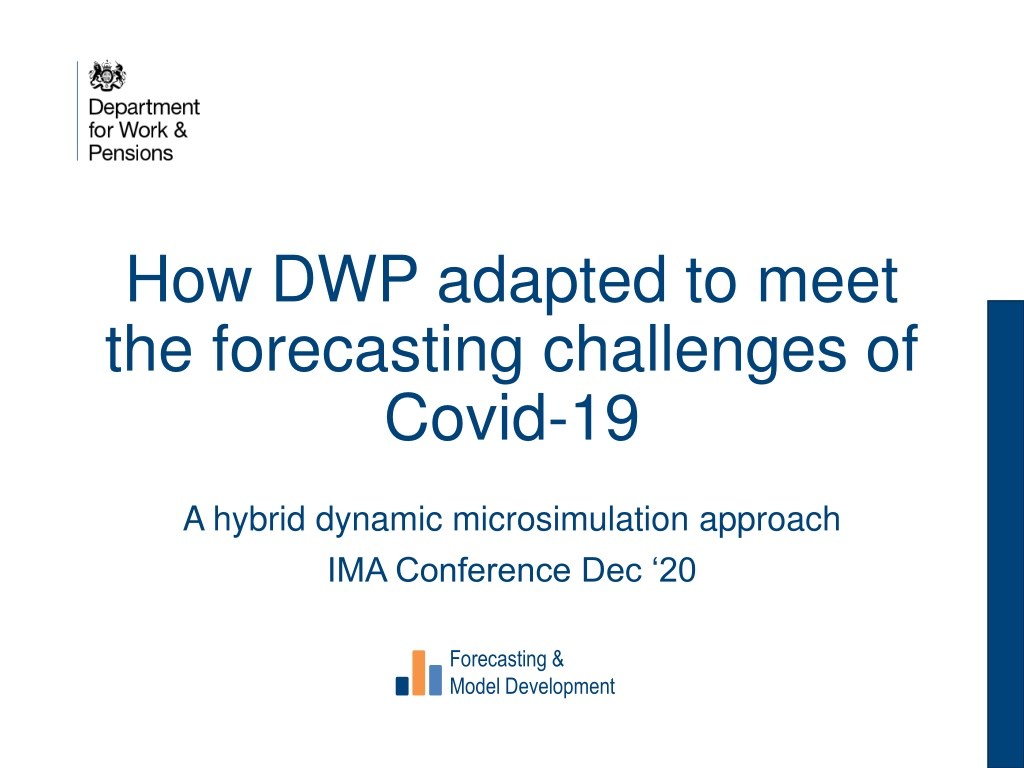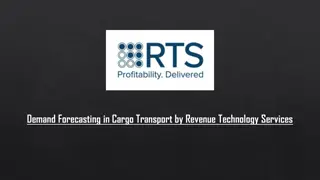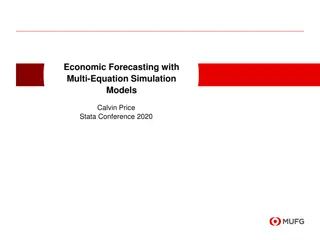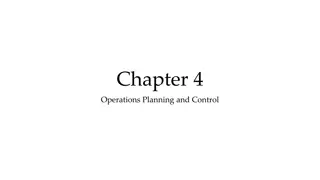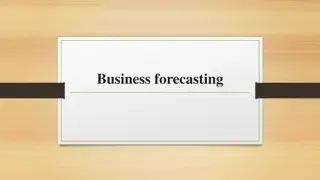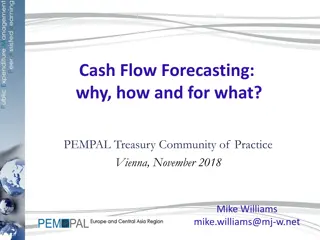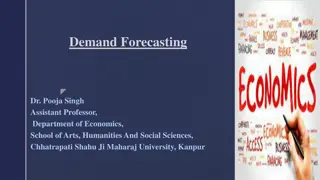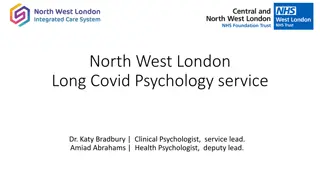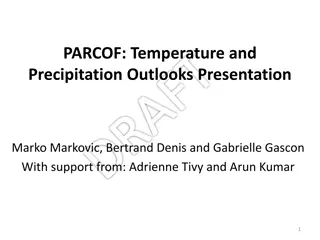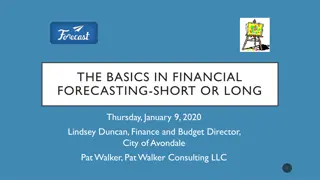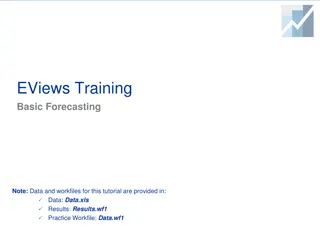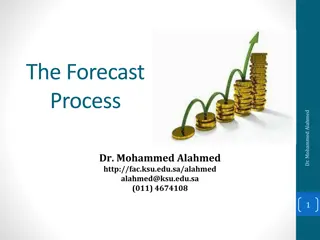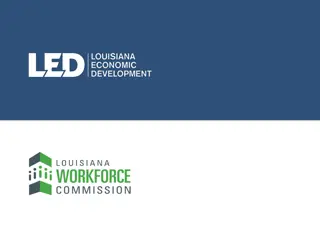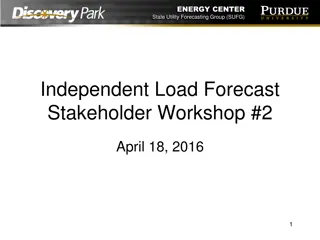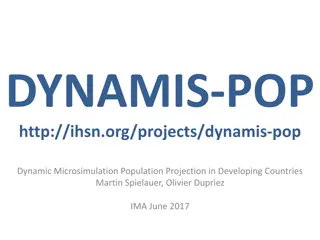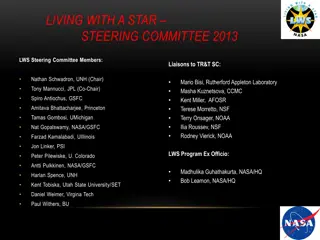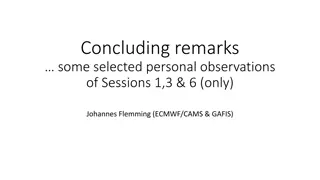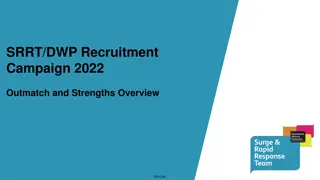Adapting DWP Forecasting for Covid-19 Challenges Using Hybrid Dynamic Microsimulation Approach
DWP adapted its forecasting for Covid-19 challenges by implementing a hybrid dynamic microsimulation approach at the IMA Conference in Dec '20. The organization's strong track record in microsimulation includes developments in AnyLogic translation, working age modeling, and forecasting. The plan involved transforming the forecasting infrastructure for Universal Credit with a focus on INFORM2 dynamic microsimulation. However, the emergence of Covid-19 necessitated a new approach to handle the fluctuations in Universal Credit households.
Download Presentation

Please find below an Image/Link to download the presentation.
The content on the website is provided AS IS for your information and personal use only. It may not be sold, licensed, or shared on other websites without obtaining consent from the author. Download presentation by click this link. If you encounter any issues during the download, it is possible that the publisher has removed the file from their server.
E N D
Presentation Transcript
How DWP adapted to meet the forecasting challenges of Covid-19 A hybrid dynamic microsimulation approach IMA Conference Dec 20 Forecasting & Model Development
We have a strong track record in microsimulation Working Age Pension Age PSM Static INFORM PENFORM PENSIM2 Dynamic Recent developments: AnyLogic Translation Move to INFORM2 Working Age Modelling & Forecasting 2
We had existing plan to transform our forecasting infrastructure for Universal Credit Legacy+UC forecast illustration (actuals) Legacy+UC forecast illustration (counterfactual) Expenditure Expenditure UC marginal Legacy counterfactual UC actuals Legacy actuals Time Time INFORM model (dynamic) Policy Simulation Model (static) INFORM2 (dynamic) Legacy Rundown Model (stock-flow) Working Age Modelling & Forecasting 3
Central to this plan is INFORM2 Dynamic microsimulation with monthly time step; Non-interacting benefit units/individuals; Based on UC admin data; Inflows synthesised from back-data (UC/Legacy); Mixture of DPMs and regression-based transitions. No change +1 month Transitions to Health Group 3 Health/Carer Status Ageing/Mortality Family Type Transitions to NWRR Does not off- flow No change Work & Earnings Conditionality Off-flows Working Age Modelling & Forecasting 4
INFORM2 fits into a larger suite of working age models INFORM2 Volumes INFORM2 AAM UC AME Forecast PSM (Policy Costings) Legacy Models (JSA, ESA, IS, TCs, HB) Legacy Rundown Model Legacy AME Forecast Working Age Modelling & Forecasting 5
And then Covid-19 happened 6 Households on Universal Credit (source: Stat-Xplore) Millions 5 4 3 2 1 0 Mar-20 Nov-19 Dec-19 Nov-20 Dec-20 Apr-20 Feb-20 Feb-21 Aug-19 Sep-19 Oct-19 Aug-20 Sep-20 Oct-20 May-20 Jul-20 Jan-20 Jun-20 Jan-21 Large increase in onflows Counterfactual = impossible Needed a new approach/model Working Age Modelling & Forecasting 6
So we built the FAST stock-flow model Daily cohorts of declarations; Convert declarations to payments; Use few-days-old data; DPMs based on past data and updated with new info; Catch-up correction based on past trends. Declarations into UC Drop outs Inflows into payment Out flows Stock being paid Out flows Stock being paid Made possible to capture the latest data to build into forecast assumptions and update frequently Out flows Stock being paid Working Age Modelling & Forecasting 7
And developed Covid Overlay approach Medium-term forecast Baseline forecast (Spring 20 consistent) Combination Tool Forecast LRM Combines FAST output with LM assumptions and SB20 baseline data INFORM 2 Short-term forecast Short-term forecasting tool covering to end of FY2021 Labour market assumptions Additional volumes above baseline FAST MI Shock period captured by LM/FAST profile; Overlaid onto Spring 20-consistent INFORM2/LRM; Consistent application of LM assumptions in FAST and combination tool; Policy changes handled off-model. Working Age Modelling & Forecasting 8 8
Resulting in our forecasts being accepted at Autumn 20 and Spring 21 90 Working-age (UC+Legacy equivalent) benefit expenditure (source: OBR Economic and Fiscal Outlook) 85 Expenditure ( bn) 80 75 70 Spring 20 Autumn 20 65 Spring 21 60 19/20 20/21 21/22 22/23 23/24 24/25 25/26 Working Age Modelling & Forecasting 9
within an evolving economic picture Mar 21 OBR Economic and Fiscal Outlook OBR Unemployment Forecasts: Spring 21 vs previous two fiscal events 10
Our current position and outlook Huge modelling and forecasting challenge met Hybrid forecasting approach certified by OBR Now working to bring Covid-period data and assumptions on-model in INFORM2 Retaining hybrid approach for time-being 11
